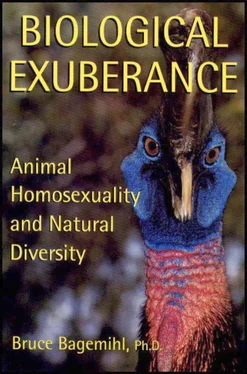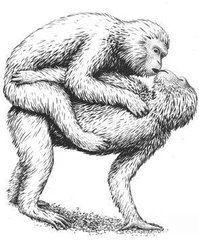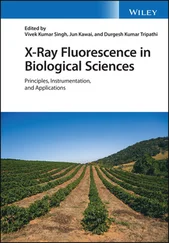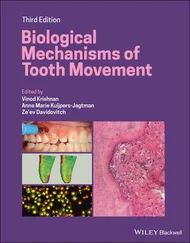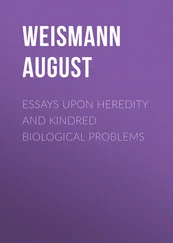Bruce Bagemihl
BIOLOGICAL EXUBERANCE
Animal Homosexuality and Natural Diversity
Snow
The room was suddenly rich and the great bay-window was
Spawning snow and pink roses against it
Soundlessly collateral and incompatible:
World is suddener than we fancy it.
World is crazier and more of it than we think,
Incorrigibly plural. I peel and portion
A tangerine and spit the pips and feel
The drunkenness of things being various.
And the fire flames with a bubbling sound for world
Is more spiteful and gay than one supposes—
On the tongue on the eyes on the ears in the palms of one’s hands—
There is more than glass between the snow and the huge roses.
—LOUIS MACNEICE
…hugest whole creation may be less
incalculable than a single kiss
—E. E. CUMMINGS
The most beautiful thing we can experience is the mysterious. It is the source of all true art and science. He to whom this emotion is a stranger, who can no longer pause to wonder and stand rapt in awe, is as good as dead: his eyes are closed.
—ALBERT EINSTEIN
[1] Einstein, A. (1930) “What I Believe,” Forum and Century 84(4):193-94.
Any book on homosexuality and transgender in animals is necessarily unfinished, a work in progress. The subject is so vast, the types of behaviors so varied, and the number of species involved so large, as to defy any attempt at comprehensiveness. And the scientific research in this area is only in its infancy: new developments and discoveries are continually being made, and the extent of uncharted and as yet unknowable terrain is so great as to render any attempt at completeness hopelessly premature.
Notwithstanding such formidable challenges, this book endeavors to present a reasonably extensive and up-to-date account of the subject. To help narrow the field, certain parameters have been chosen: only examples of homosexual behavior or transgender that have been scientifically documented, for example, are covered in this book (such documentation includes published reports in scientific journals and monographs, and/or firsthand observations by zoologists, wildlife biologists, and other trained animal observers, corroborated by multiple sources whenever possible). Not only does this limit the number of species to be included (many more cases undoubtedly occur but have not been so documented), it establishes a uniform and verifiable platform of data on which to base further discussion. In addition, the book focuses primarily on mammals and birds—not because other types of animals are somehow less interesting or “important,” but simply because space and time limitations necessitate that not all species can be covered. These two groups are considered to be sufficiently representative and to have a broad enough appeal to warrant their inclusion, however arbitrary the exclusion of others may be.
Even with these parameters in place, however, an enormous amount of ground must still be covered. In addition to discussing an extensive array of species (nearly 300 mammals and birds), the book draws upon more than two centuries of scientific research. Some of the findings reported here in a few sentences represent literally lifetimes of work on the part of biologists, who often devote their entire careers to studying one very specific and complex aspect of one type of behavior, in one particular population of one particular species. With this in mind, the book should be seen not as a final, definitive pronouncement on the subject, but rather as a beginning or overture, an invitation to further research and discussion.
Any account of homosexuality and transgender in animals is also necessarily an account of human interpretations of these phenomena. Because animals cannot speak directly for themselves the way people can, we must rely on human observations of their behavior. This presents both special challenges and unique advantages to the study of the subject. On the one hand, certain behaviors such as sexual acts can be observed directly (and even quantified), which is often extremely difficult, impossible, or unethical to do in studies of sexuality among people (especially stigmatized or alternative forms of sexuality). On the other hand, we are in the dark about the internal experiences of the animal participants: as a result, the biases and limitations of the human observer—in both the gathering and interpretation of data—come to the forefront in this situation. In many ways this is the reverse of what occurs in some studies of homosexuality among people (including well-informed historical or anthropological studies of different cultures or time periods). With people, we can often speak directly to individuals (or read written accounts) about what their sexuality and associated phenomena mean—and so get a sense of their emotional and motivational states—without necessarily being able to verify their actual sexual behaviors. With animals, in contrast, we can often directly observe their sexual (and allied) behaviors, but can only infer or interpret their meanings and motivations. As a result, many contentious assertions, theories, interpretations, and explanations have been put forward (and continue to be made) within the field of zoology about the function(s) and meaning (s) of homosexuality and transgender. This book seeks to address this historical and very human dimension of the subject, while still maintaining a focus on the animals, their behaviors and lives.
The unique historical moment we find ourselves in also necessitates the book being geared as much as possible toward specialist and nonspecialist alike, and informs the organization and two-part structure of the book. Because of the current inaccessibility of a large body of scientific information, a primary aim is to present the technical material to a general (nonacademic) readership, without sacrificing accuracy or sensationalizing what is often a controversial and difficult subject matter. However, because no comprehensive survey (and synthesis) of this material is yet available within the scientific literature—indeed, many zoologists are themselves unaware of much of this material—and because a considerable amount of misinformation and misunderstanding surrounds the subject even among trained biologists, the volume will also be of interest to the scientific community. Consequently, every effort has been made to provide full documentation in the form of notes and references, and to include relatively exhaustive and detailed coverage of a wide range of species. However, this more technical material is positioned in such a way that it can easily be skipped by readers who do not wish to delve into such matters.
In a book such as this which is intended for both an academic and a nonacademic readership, the question of terminology poses special challenges. I have attempted to steer a course between more accessible but overly anthropomorphic or loaded vernacular, on the one hand, and more “neutral” but highly technical jargon or awkward circumlocutions, on the other. In particular, homosexual(ity) and same- sex are utilized as the labels of choice. Since the words gay and lesbian are burdened with human connotations (cultural, psychological, historical, and/or political) and may not be regarded as appropriate designations for animals, I have been careful to avoid using these terms throughout most of the book (as pointed out in chapter 1). When referring specifically to animals and their behaviors, for example, gay is never employed, while lesbian is used only sparingly (it occurs in less than 3 percent of the more than 3,000 instances in the text where animal homosexuality is named). Even then, lesbian is usually reserved only for cases of linguistic expedience, when alternate phrasings such as “female homosexual(ity)” or “same-sex… among/between females” would become repetitive, cumbersome, or otherwise infelicitous.
Читать дальше
